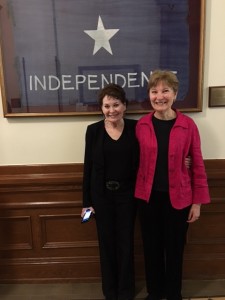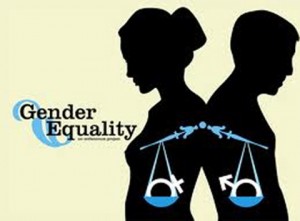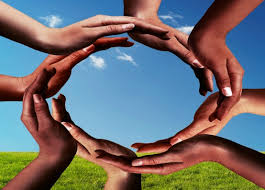International Women’s Day 2017
 March 8 people around the world celebrated International Women’s Day. This year’s theme, “Be Bold for Change,” emphasized changes needed for women’s equality in the workplace. The International Women’s Day color has traditionally been purple, but this year it was red.
March 8 people around the world celebrated International Women’s Day. This year’s theme, “Be Bold for Change,” emphasized changes needed for women’s equality in the workplace. The International Women’s Day color has traditionally been purple, but this year it was red.

I celebrated International Women’s Day at the Texas state Capitol in Austin, where a Memorial Resolution, honoring my mother, Eva Aldredge Henley, was read and adopted. This memorial felt especially appropriate on this day because Mother was bold in working for change and her favorite color was red. I wore red to honor her and all the women who boldly labor for women’s rights.
International Women’s Day called attention to continued gender discrimination in the world of work. Women do the majority of unpaid work, putting them at a disadvantage in the economy. Much of the work my mother did all her long life was unpaid, even though she had 3 university degrees, exceptional leadership skills, and a strong work ethic. She faithfully served church, home, and community without pay. This video about unpaid work reminded me of her.
Even in paid work, women are over-represented in jobs with the poorest compensation. There is an urgent need for expanding employment opportunities for women, for removing discrimination women face in the workplace, and for equal pay for women. The average wage gap between all women and men in the US is 23%, rising to 40% for African American women and 44% for Latinas.

 On International Women’s Day, I also had the privilege of meeting with Congresswoman Victoria Neave, who represents my district. She is one of only 36 women in the Texas legislature out of 181. Congresswoman Neave and I talked about her efforts to increase the representation of women and about her efforts on many issues of importance to women and to all Texans.
On International Women’s Day, I also had the privilege of meeting with Congresswoman Victoria Neave, who represents my district. She is one of only 36 women in the Texas legislature out of 181. Congresswoman Neave and I talked about her efforts to increase the representation of women and about her efforts on many issues of importance to women and to all Texans.
 International Women’s Day focused on the big vision of a world where all women and girls have equal opportunities and rights by 2030. Key steps that the UN initiative listed include:
International Women’s Day focused on the big vision of a world where all women and girls have equal opportunities and rights by 2030. Key steps that the UN initiative listed include:
- By 2030, ensure that all girls and boys complete free, equitable and quality primary and secondary education.
- By 2030, ensure that all girls and boys have access to quality early childhood development, care and pre-primary education so that they are ready for primary education.
- End all forms of discrimination against all women and girls everywhere.
- Eliminate all forms of violence against all women and girls in the public and private spheres, including trafficking and sexual and other types of exploitation.
International Women’s Day called on all people to help create an inclusive, gender equal world that will bring great benefits to all.
History of International Women’s Day
International Women’s Day emerged from the activities of labor movements at the turn of the twentieth century in North America and across Europe.
Since those early years, International Women’s Day has assumed a global dimension for women in developed and developing countries. The growing international women’s movement, which has been strengthened by four global United Nations women’s conferences, has helped make the celebration a rallying point to build support for women’s rights and participation in the political and economic arenas.
In 1909, the first National Woman’s Day was observed in the United States in honor of the 1908 garment workers’ strike in New York, where women protested against working conditions.
In 1911, International Women’s Day was marked for the first time. More than one million women and men attended rallies to demand women’s rights to vote and to hold public office, and women’s rights to work, to vocational training, and to an end to discrimination on the job.
In 1995, The Beijing Declaration and Platform for Action, a historic roadmap signed by 189 governments, focused on 12 critical areas of concern, and envisioned a world where each woman and girl can exercise her choices, such as participating in politics, getting an education, having an income, and living in societies free from violence and discrimination.
Sadly, many of the rights women demanded at the first International Women’s Day in 1911, reaffirmed and expanded in 1995, still have not been realized.
Call for Fifth World Conference on Women
For the past several years, many people have been calling for a Fifth World Conference on Women to build on the momentum of the 1995 Beijing Conference and to bring the energy of the millennials and the experience of the boomers together in a world-changing 21st Century World Conference on Women. The goal of this Fifth World Conference on Women is to bring what mothers universally want for their children to everyone: a peaceful world, good food, air, and water, universal education, medical care, the chance to develop and grow physically, intellectually, and spiritually.


Oh, we’re gonna get our 5th women’s conference!! 😉 Brilliant article. You got to speak with Victoria Neave! You’re my heroine, so proud of you and your sister and your mom. Y’all are tall trees I have to look up to!
Thank you, Colette, for your kind words and all your wonderful support! Yes, we’re gonna get our 5th women’s conference with Her help. Keep praying. Victoria Neave is awesome. The next time you’re in Austin, call her office to make sure she’ll be there and then go by to visit with her. She will love hearing from you! She’s very open to connections between spirituality and politics.
You presented a wonderful collection of notes and events and photos for International Women’s Day 2017. I especially love knowing that your mother’s maiden name was Aldredge, which you now carry on. I also love the hands in a circle photo.
Anne
Thank you, Anne, for your kind comments!